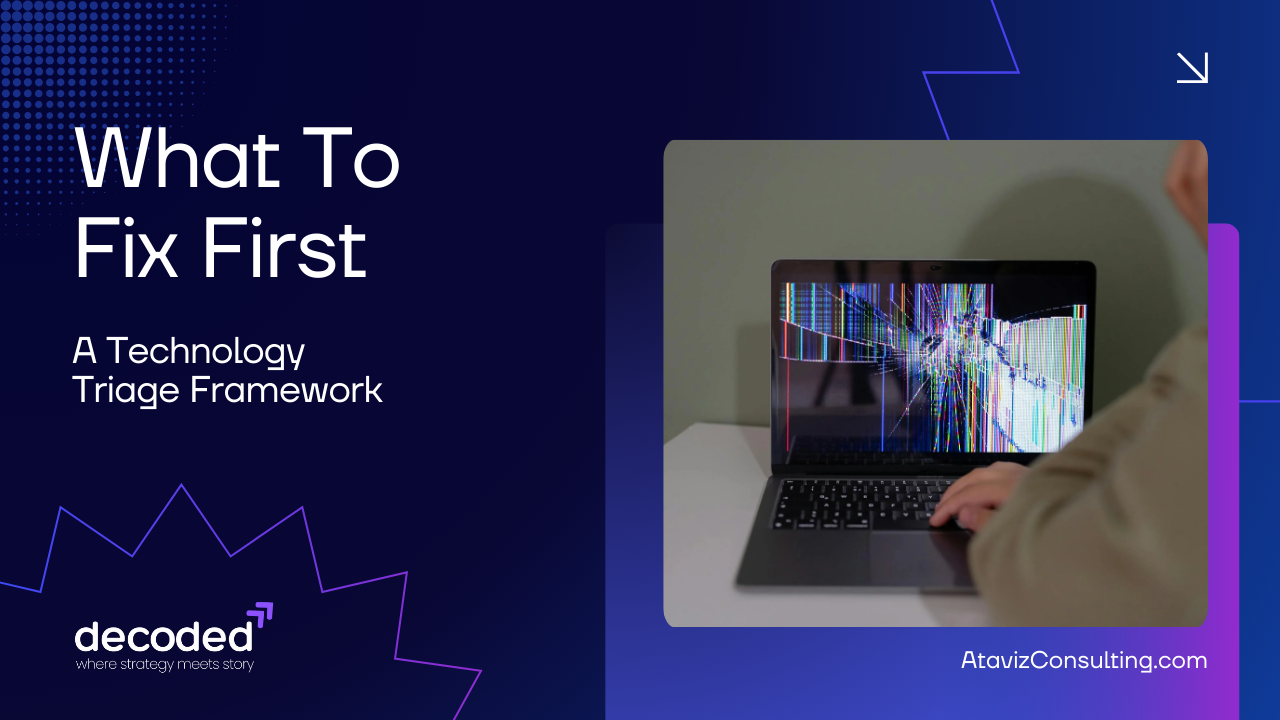
The Hidden Cost of Bad Integrations:
Why AI Can’t Save Your Siloed Systems

September 24, 2025
By Nicholas Johnson, Founder of Ataviz Consulting
Every company today is chasing the AI wave. From generative tools to agentic AI systems, the promise is everywhere: faster workflows, smarter decisions, and unprecedented efficiency.
But here’s the uncomfortable truth: AI can’t save broken systems.
If your tech stack is fragmented, your data is siloed, and your tools don’t talk to each other, layering AI on top won’t magically fix the problem. In fact, it might make the cracks in your foundation even more visible.
The Silent Killer of Efficiency

Most leaders know the obvious costs of poor integration: duplicate work, endless context-switching, wasted licenses. But the hidden costs are even worse:
- Data Confusion → Multiple “sources of truth” that don’t align, leading to bad decisions.
- Process Friction → Employees spending more time moving information between tools than acting on it.
- Lost Agility → When every change requires manual adjustments across systems, innovation slows to a crawl.
In a world where AI agents are supposed to optimize operations in real-time, these inefficiencies compound. An agent is only as smart as the systems it’s pulling from, and bad integrations mean bad outcomes.
AI Without Integration = Automation of Chaos

Think about it: if your CRM isn’t connected to your marketing platform, or your ERP doesn’t sync with your reporting tools, then AI has two options:
- Automate in silos → speeding up isolated tasks but never fixing the bigger problem.
- Guess across gaps → filling in missing information with flawed assumptions.
Neither leads to the competitive advantage AI is supposed to deliver.
Instead, what happens is the automation of inefficiency. You move faster... but in the wrong direction.
Integration as the Real Competitive Advantage

The companies that will win in the AI era won’t just have the flashiest models or the biggest datasets. They’ll be the ones that invest in seamless, scalable integration across their entire ecosystem.
That means:
- Building data pipelines that ensure a single source of truth.
- Designing systems that can adapt as new tools enter (and exit) the stack.
- Treating integration not as an IT afterthought, but as a strategic priority.
In other words: integration isn’t just technical plumbing, it’s business architecture.
Looking Ahead: Continuous Integration, Continuous Change

Here’s the future I see:
- Agentic AI won’t operate in isolation. It will coordinate across systems, acting as a conductor of business processes. But that only works if the instruments (your tools and data) are tuned and connected.
- Change management becomes integration management. As tools evolve, APIs shift, and platforms consolidate, the ability to adapt integrations quickly will be the difference between staying agile and falling behind.
- Customer experience will depend on invisible connections. Customers don’t care what tools you use. They care about seamless experiences. Behind the scenes, integrations will make or break that promise.
Final Takeaways
AI might be the headline, but integration is the infrastructure. Without it, even the most advanced AI strategy collapses under the weight of fractured data and disconnected systems.
The companies that thrive won’t be the ones who just “use AI.” They’ll be the ones who recognize that AI is only as powerful as the ecosystem it operates in.
So before you ask, “How do we add AI to this?” start by asking:
“Do our systems even speak the same language?”
-- Your Hidden CTO

Stay in the loop
Get updates straight to your inbox.